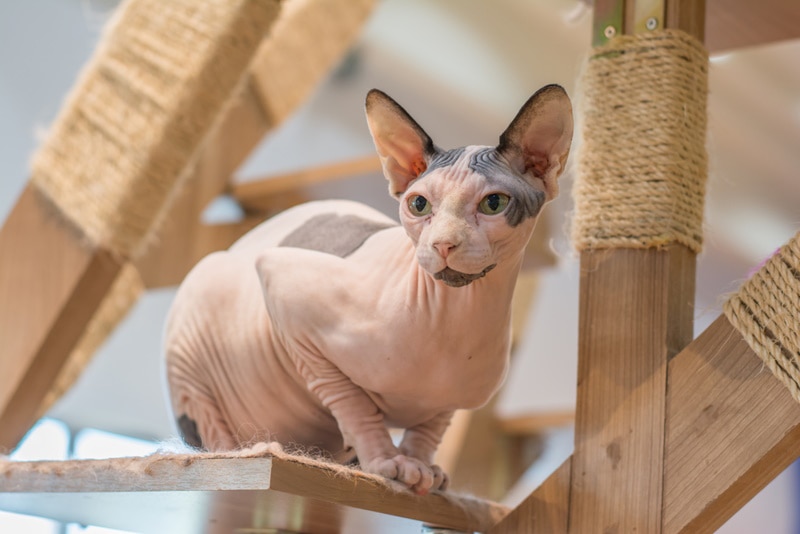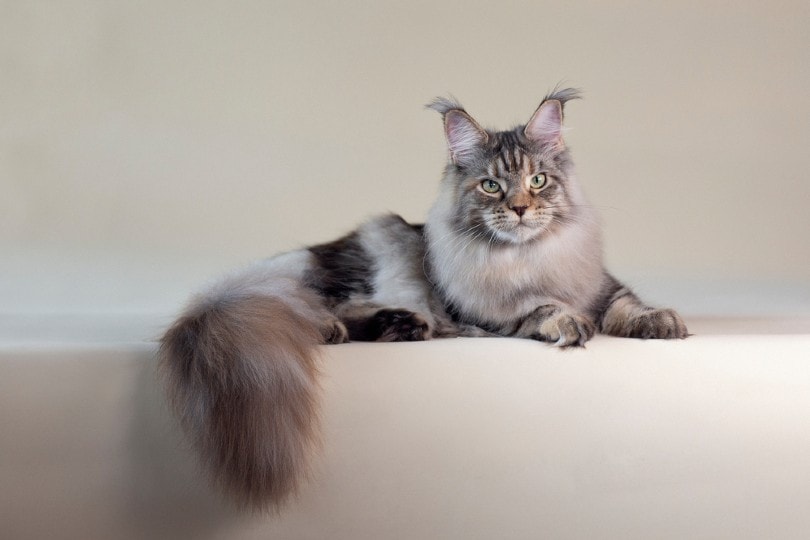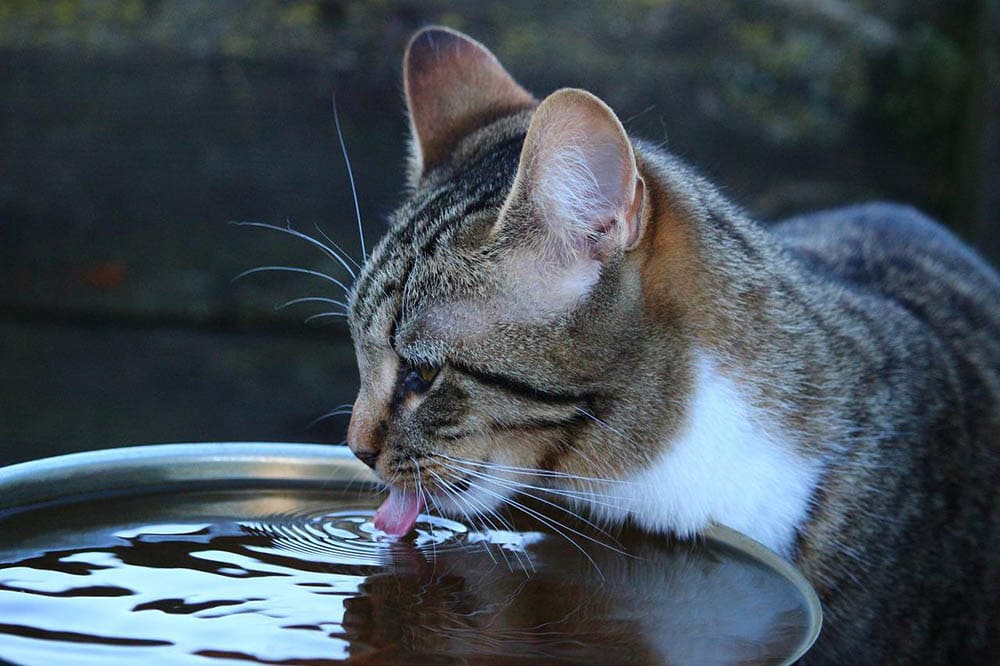11 British Cat Breeds (with Pictures)

Updated on
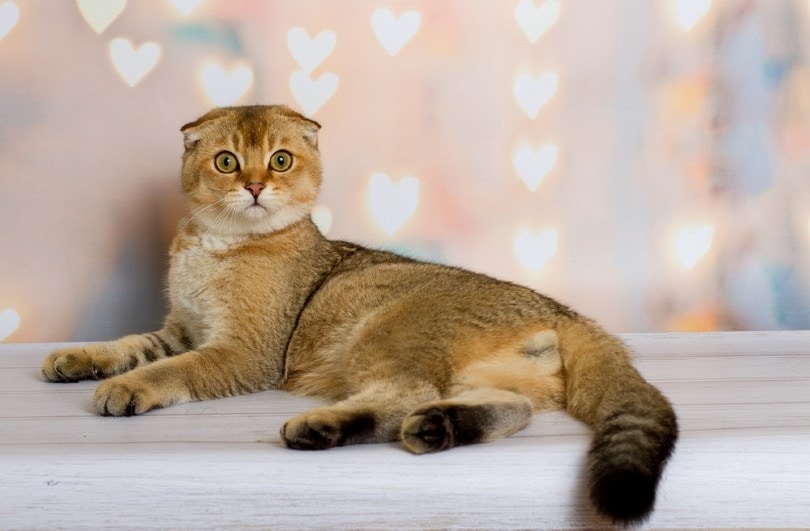
If you Google “British cats,” most of your initial results will likely turn up British Shorthair and Longhair cat information. Upon deeper searching, you will quickly realize that many more than just these two breeds come out of England.
Below, we will look at 11 of the most common British Cat breeds. If you’ve been tossing around the idea of getting one of these cats, we’ve included a few metrics to help you decide if a particular cat breed is right for your family.
The 11 British Cat Breeds
1. Cornish Rex
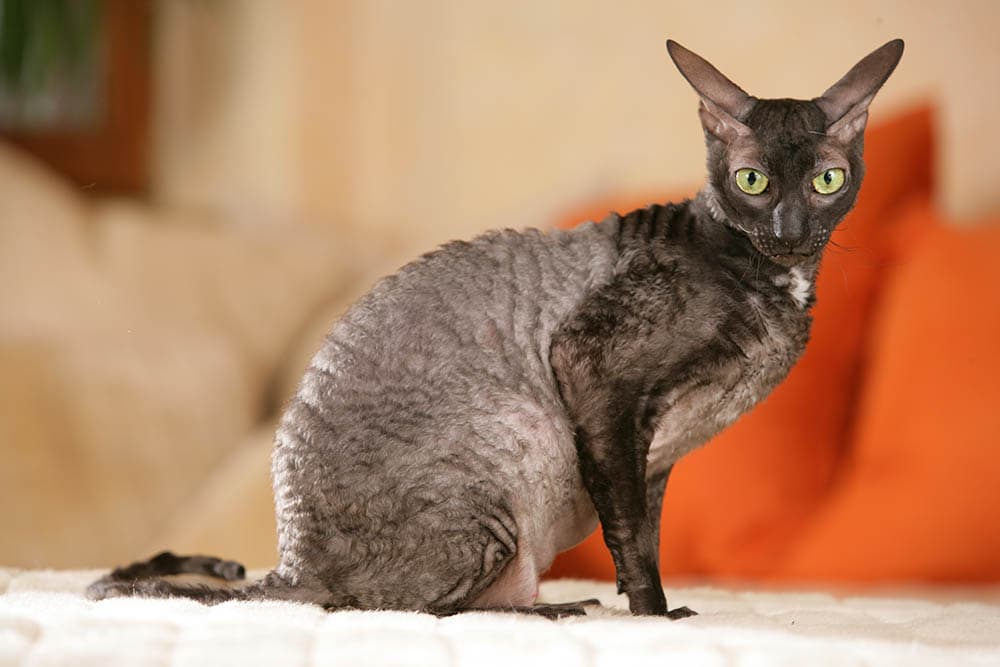
| Lifespan: | 15–20 years |
| Weight: | 6–10 pounds |
| Temperament: | Charming, playful |
| Colors: | Brown, black, red, cream blue, lilac |
The Cornish Rex is well-known for its coat; the short curly hair is a unique feature. This species has five primary coat colors, however, they come in a wide range of patterns. Often, we think of cats as independent animals, but the Cornish Rex is almost dog-like with how much it enjoys playtime.
Many people think this breed came from a Cornwall tabby crossed with a British Shorthair.
2. Chinchilla
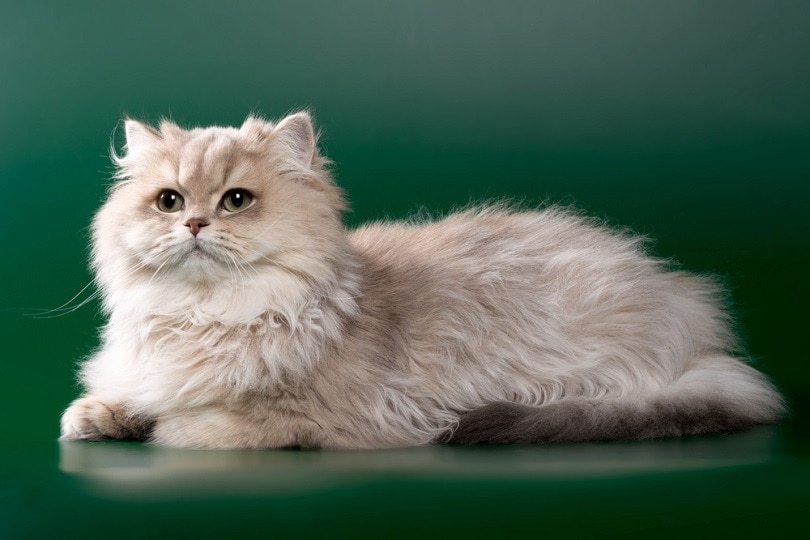
| Lifespan: | 12–15 years |
| Weight: | 9–12 pounds |
| Temperament: | Quiet, pleasant |
| Colors: | White with dark tips |
Before you jump to any conclusions, we aren’t talking about the rodent that is kept as a pet—although they are also adorable. The Chinchilla is a popular long-haired Persian cat. Two features of the Chinchilla that draw people in are its beautiful blue-green or green eyes and its long, luxurious white hair. The downside to their incredible hair is that they require a lot of brushing.
The Chinchilla is a quiet cat and doesn’t like a lot of commotion. So, it’s not an ideal cat for families with small children.
3. British Shorthair
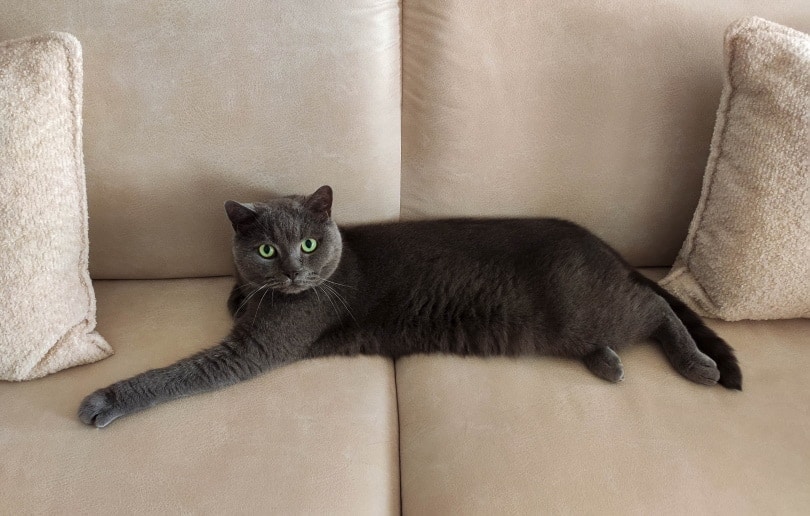
| Lifespan: | 13–20 years |
| Weight: | 7–17 pounds |
| Temperament: | Relaxed, friendly |
| Colors: | White, cream, black, blue, red, lilac |
If there were one cat to come out of Britain that everyone knew about, it would be British Shorthairs. You can recognize that broad face and puffy coat anywhere. Many people believe that they were originally from Rome. The cats were brought to Britain to aid in mouse and rodent population control.
Over the years, the British Shorthair population declined, so they were bred with Persians to preserve the species. Some people refer to a British Shorthair as a “British Blue” because of the iconic blue coloring in some of their coats.
4. Devon Rex
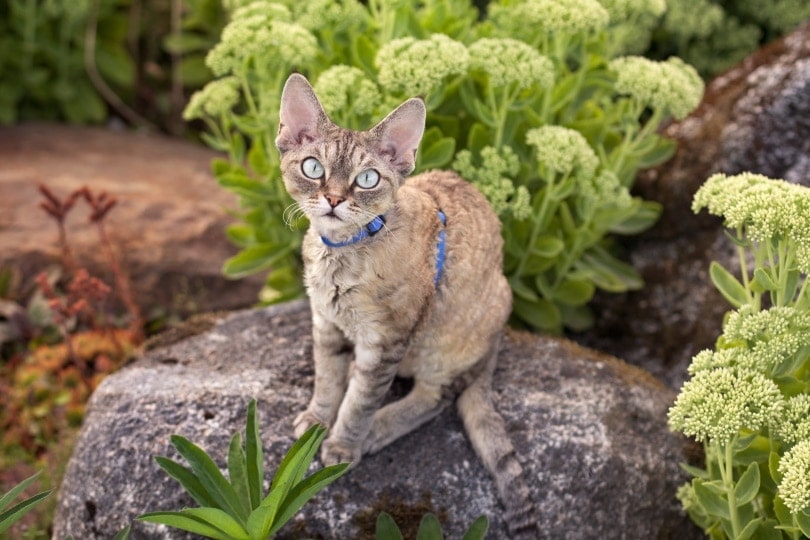
| Lifespan: | 9–15 years |
| Weight: | 6–9 pounds |
| Temperament: | Relaxed, friendly |
| Colors: | Nearly all colors |
Not a lot is known about the Devon Rex’s ancestry. The only thing we know about their beginning is that they came out of Devon, England—hence the name. They are similar in many ways to the Cornish Rex. For example, they are super playful and easy to train.
However, they have a few notable differences, such as straighter hair, bigger ears, shorter whiskers, and more muscular legs.
5. British Longhair
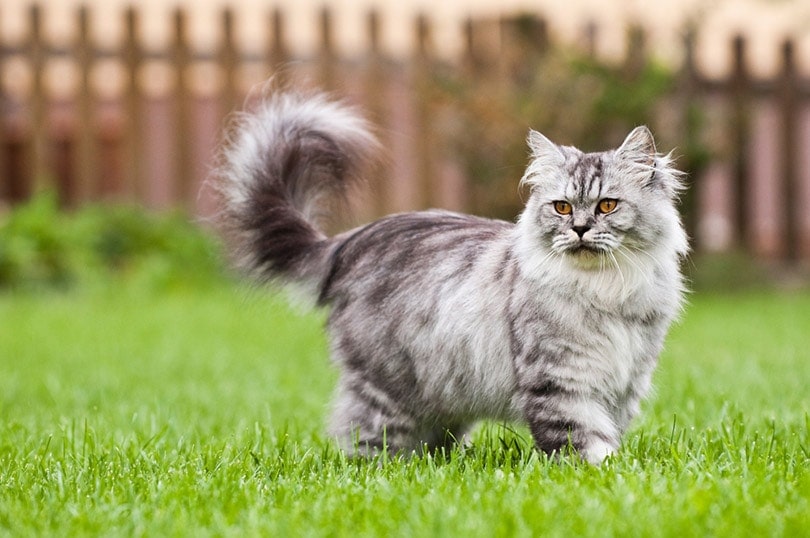
| Lifespan: | 12–15 years |
| Weight: | 8–16 pounds |
| Temperament: | Affectionate, friendly, smart |
| Colors: | Many color combinations |
The British Longhair is similar to the Shorthair. But if you’re looking for a more allergy-friendly cat, long hair is typically better that way. The long hair probably came from the cross-breeding with the Persian cats when the British Shorthair population was dwindling.
British Longhair cats are affectionate and smart, and they are excellent in many family dynamics. However, they enjoy their solitude too, so they need space.
6. Scottish Fold
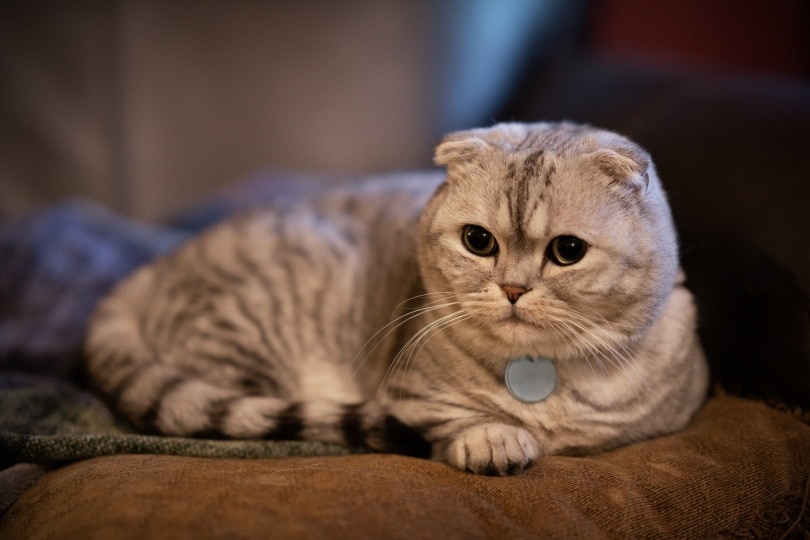
| Lifespan: | 11–15 years |
| Weight: | 6–13 pounds |
| Temperament: | Sociable, calm |
| Colors: | Many color combinations |
The Scottish Fold is a great option if you’re looking for a cat that gives you the best of both worlds. They aren’t hyper cats, but they aren’t bumps on a log either. They love to be around their humans and love a snuggle here and there. If you’re wondering where their cute folded ears come from, that traces back to the mother of all Scottish Folds—Susie.
In the 1960s, Susie was bred with a British Shorthair. The resulting litter was little Susies with their folded ears.
7. Havana Brown
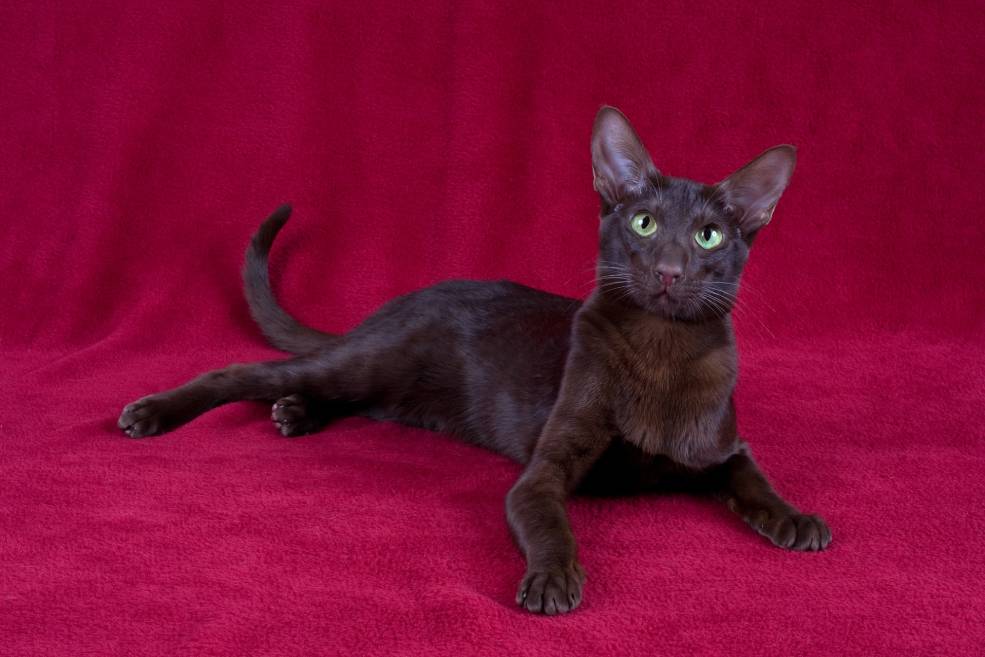
| Lifespan: | 8–13 years |
| Weight: | 8–10 pounds |
| Temperament: | Affectionate, easygoing |
| Colors: | Brown, red, black |
Many British cat breeds trace their ancestry back to the British Shorthair, and the Havana Brown is no different. It came from breeding between a Siamese cat and a Shorthair. In that first litter, only one brown kitten emerged. As that brown kitten matured and had other litters, we eventually got the Havana Brown that we know today.
One interesting trait that these beautiful brown cats retained from their Siamese ancestors was their love for chatting!
8. Asian
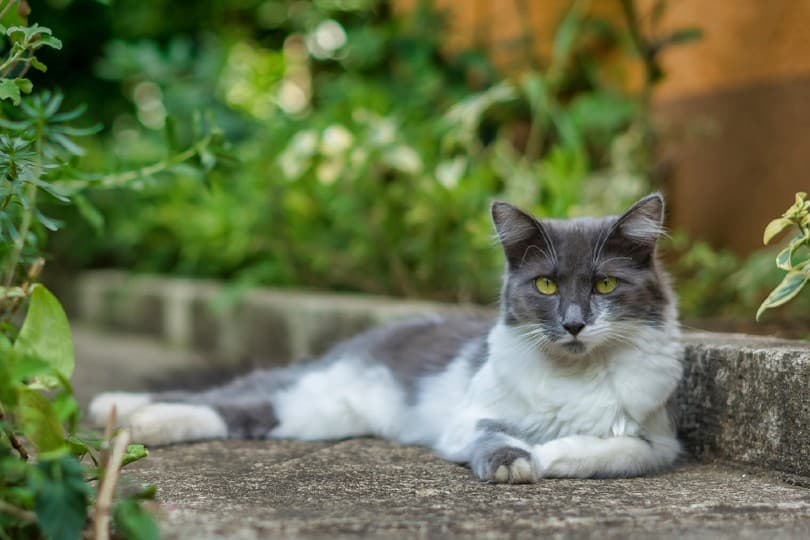
| Lifespan: | 12–18 years |
| Weight: | 6–13 pounds |
| Temperament: | Sociable, friendly |
| Colors: | Many color combinations |
Contrary to what its name suggests, the Asian was indeed bred in England in the 1980s. It’s a cross between a Burmese and Chinchilla. Looks and behavior-wise, the Asian retains its Burmese roots.
If you’re looking for a cat that loves attention, the Asian fits the bill. They love being a part of their human’s lives, and you may find that they follow you around the house seeking your attention.
9. Turkish Van
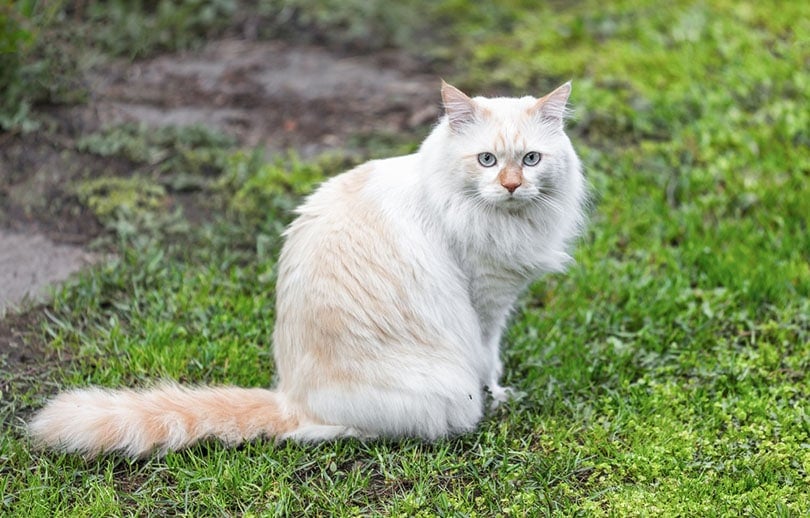
| Lifespan: | 12–15 years |
| Weight: | 12–16 pounds |
| Temperament: | Playful, active |
| Colors: | White (sometimes with brown or black markings) |
The Turkish Van is originally from Turkey. However, it was brought to Britain and bred with other species to get its characteristic tail and ear markings. Typically, a Turkish Van will have green eyes, but in some cases, they’ve been known to have two different colored eyes; one blue and the other green, for example.
These cats are lovely family cats. They love to be picked up and snuggled. For how great they are, it’s interesting to note that there are only about 100 of them registered annually as purebreds. So, they are a relatively rare cat breed.
10. Burmilla
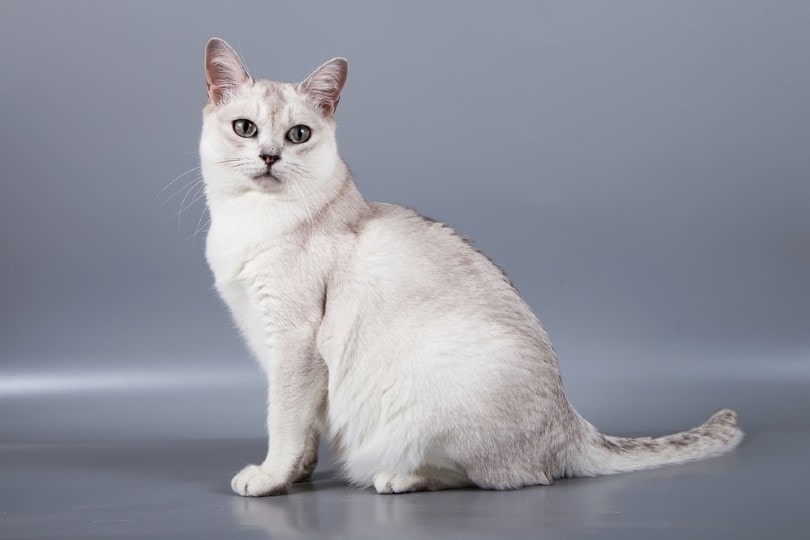
| Lifespan: | 7–12 years |
| Weight: | 8–12 pounds |
| Temperament: | Friendly, cuddly |
| Colors: | Many color combinations |
If you couldn’t guess by the name, the Burmilla is a Burmese and Chinchilla mix cat breed, like the Asian. The Burmilla has a good mixture of both its ancestors. It’s got the shorter hair of the Burmese, but it has the mesmerizing green eyes of the Chinchilla too.
Compared to some of the other breeds on this list, this one is relatively new. It was first bred—by accident—in the 1980s, but the Burmilla wasn’t recognized as a breed until 1997.
11. Oriental
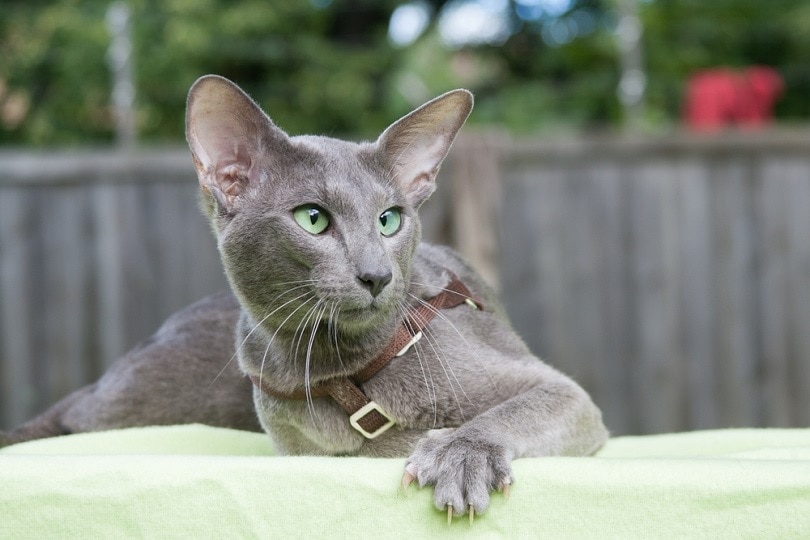
| Lifespan: | 8–12 years |
| Weight: | 9–14 pounds |
| Temperament: | Loyal, smart |
| Colors: | Many color combinations |
Chinese Siamese cats were popular cats in Britain for many years. The Oriental was bred out of them. Its long, slender body and big ears are reminiscent of its Siamese roots. Typically, the Oriental has short hair, but there are longhair breeds, although they are rare. Another name for the Oriental is “Foreign Shorthair.”
Conclusion
One thing that we can see by looking at these British cat breeds is that the British have mastered the art of cross-breeding. Some of the world’s most interesting and unique cat breeds have come out of England. It’s interesting to see how some of these breeds are very similar, but simply switching up breeding can create a new one with a uniquely different temperament.
Featured Image Credit: Diachenko, Shutterstock


